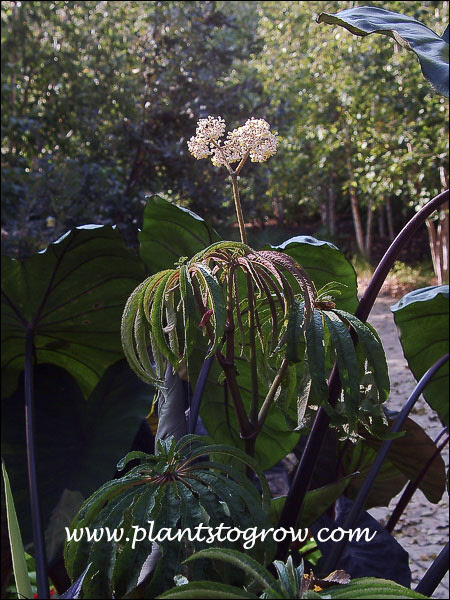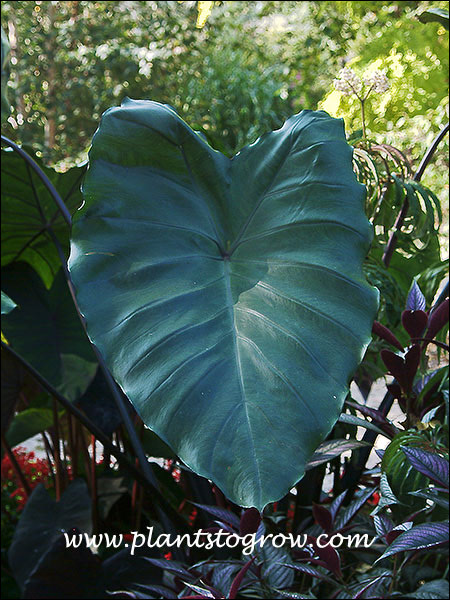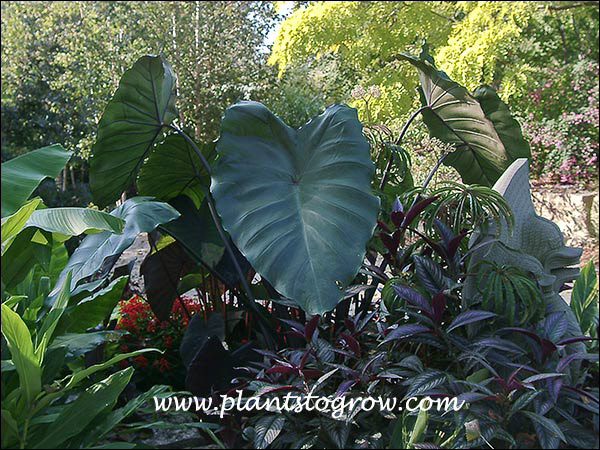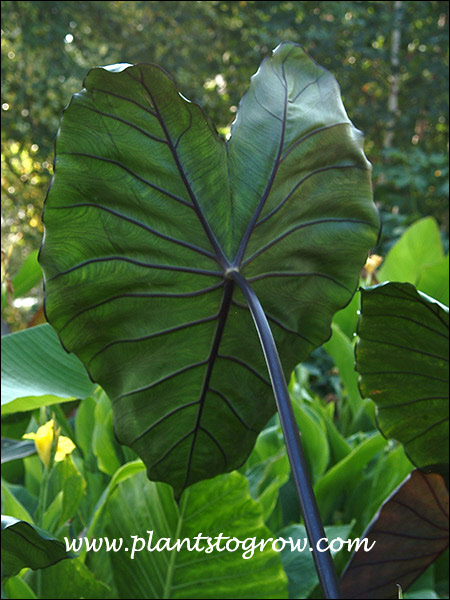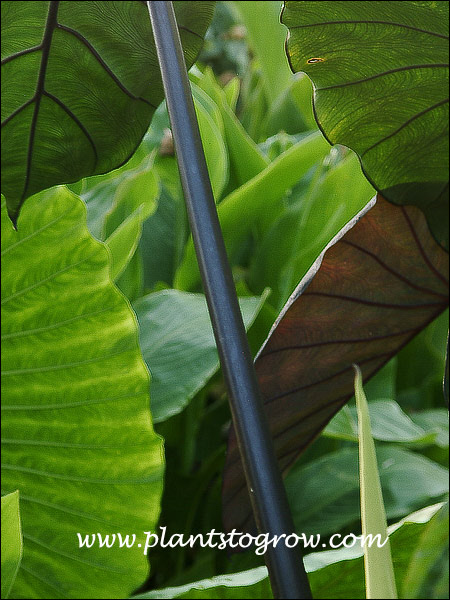| Description | A large tropical plant with dark almost black stems and large leaves. Grown as an annual in colder hardiness zones. |
|---|---|
| Pronunciation | (kol-oh-KAY-see-uh)(es-kew-LEN-tuh) |
| Plant Type | All Plants, Perennial Tender |
| Hardiness Zone | 8-11 |
| Sunlight | full to part shade |
| Moisture | preferrs moist, easily wilts especially when root bound in the pot |
| Soil & Site | average, humusy |
| Flowers | a yellow spathe enclosing a yellow spadix |
| Leaves | 2-3 feet, arrow shaped leaves, purplish green, dark purple almost black veins and leaf stem (petiole) |
| Stems | grows from a corm |
| Dimensions | 5-6 feet high, 2-3 feet wide |
| Maintenance | pruning the bottom leaves that are dying, dig the corms after the first frost, clean and store cool and dry, check periodically to see if they are dehydrating, I soak them in a pail of water for a few minutes if this happens, smaller corms dry out quicker |
| Propagation | division |
| Misc Facts | The Elephant Ears are also called Taro. All parts of the Taro can cause sickness if not cooked before consumed. Sap can also irritate the skin. |
| Notes & Reference | #51-Armitage's Manual of Annuals, Biennials, and Half-Hardy Perennials (Alan Arimitage), Floridata web site),Rainyside Gardeners web site |

Cart

